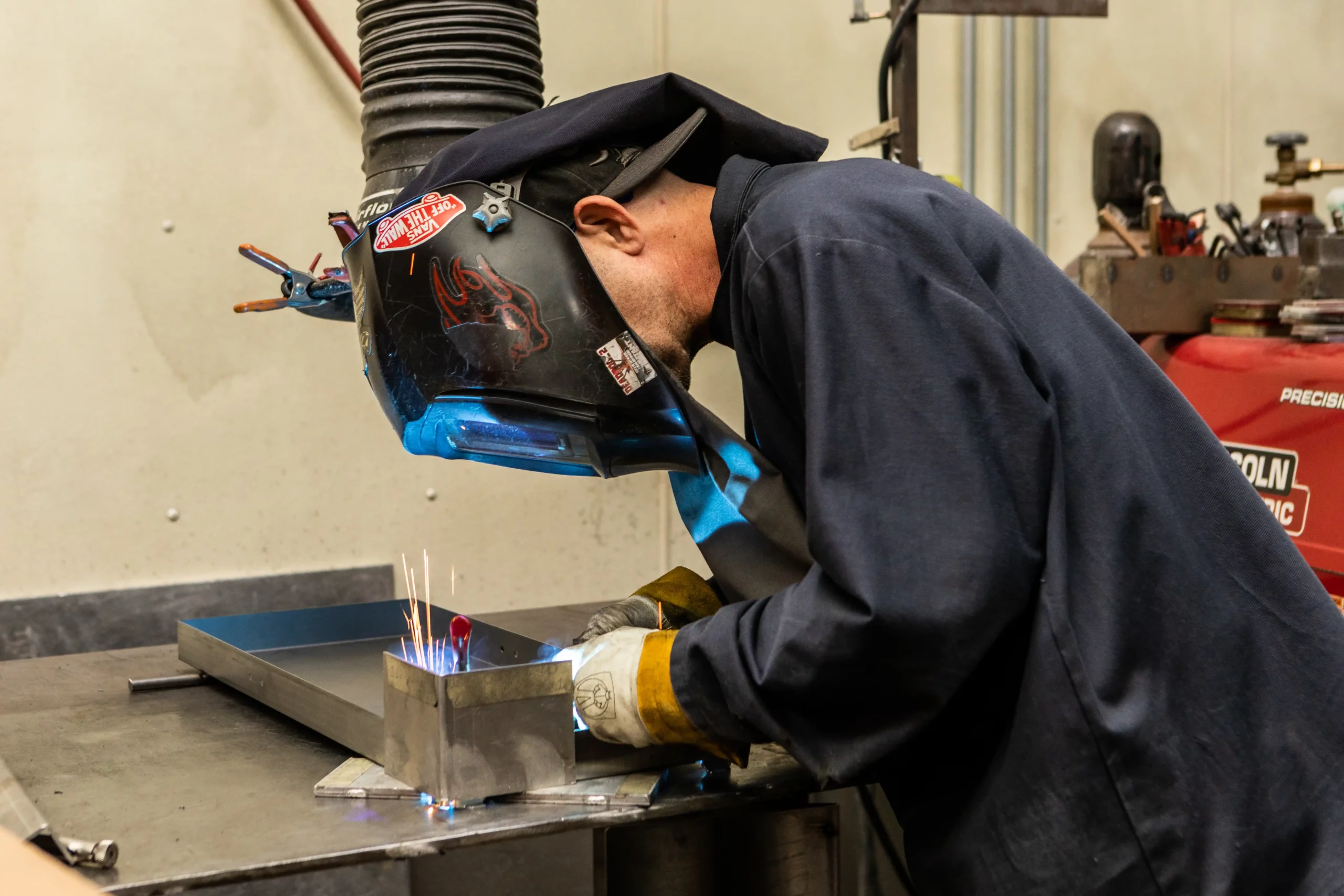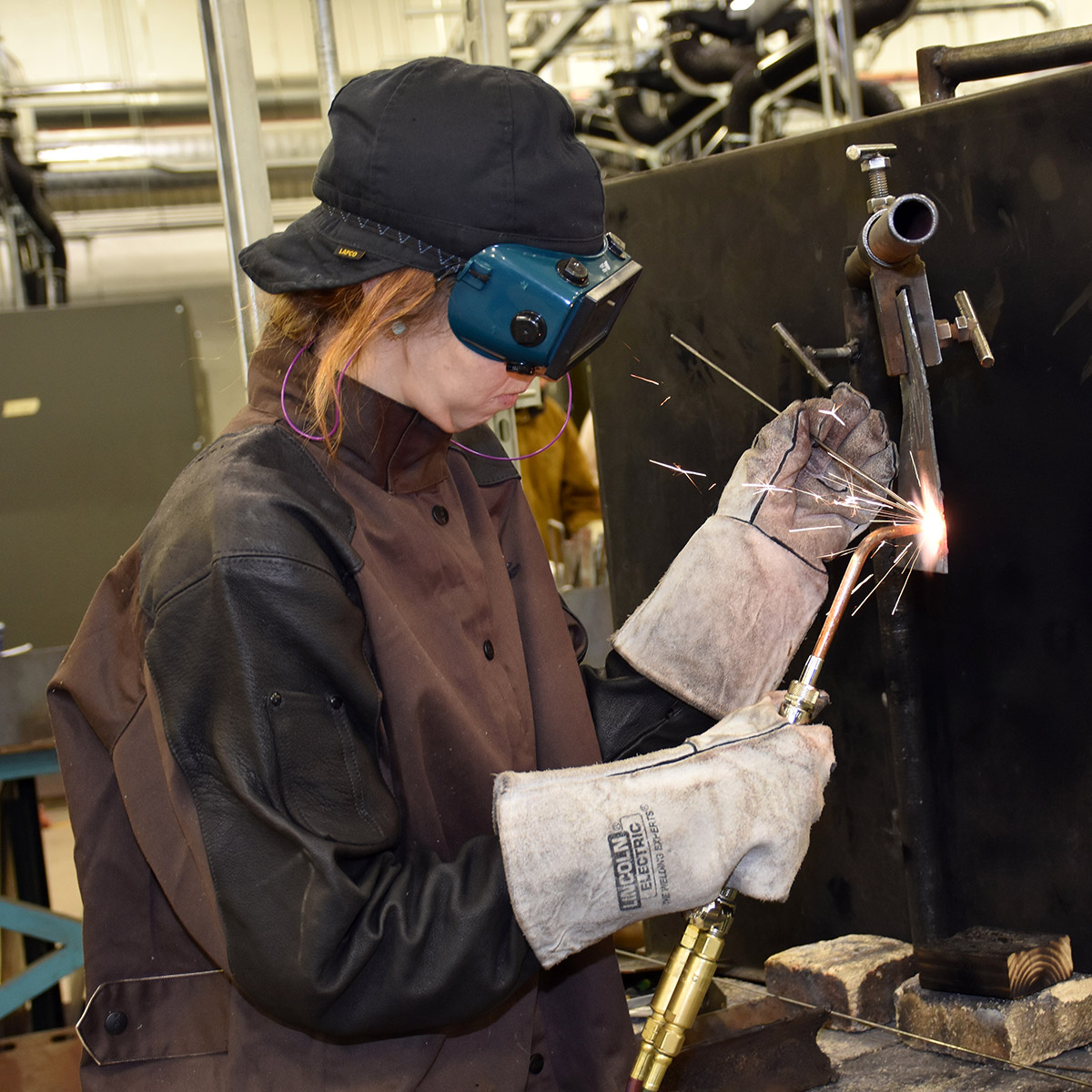Everything about Welding: Key Insights Into Techniques and Best Practices for Success
Welding incorporates a variety of methods, each fit for certain products and applications. Understanding these approaches, such as GMAW, SMAW, and TIG, is essential for attaining perfect outcomes. The right equipment and safety and security techniques can not be forgotten. As prep work and fixing play vital roles in the welding process, understanding these elements can greatly enhance the high quality of the final item. What are the vital variables that assure an effective weld?
Comprehending Different Welding Methods
Welding methods incorporate a selection of methods, each suited to particular applications and materials. Amongst one of the most typical strategies are Gas Steel Arc Welding (GMAW), Shielded Metal Arc Welding (SMAW), and Tungsten Inert Gas Welding (TIG) GMAW, likewise called MIG welding, is popular for its speed and adaptability, making it suitable for slim materials. SMAW, or stick welding, is favored for its simpleness and performance in outdoor environments, especially with thicker steels. TIG welding supplies precision and control, making it appropriate for detailed work and non-ferrous steels (Welding). Each technique has its unique advantages and considerations, allowing welders to select the very best method based on the task's needs, product type, and preferred end results. Comprehending these strategies is vital for effective welding
Necessary Welding Equipment and Tools
While different welding techniques require certain skills, the ideal tools and tools are similarly essential for attaining quality results. Necessary welding equipment includes welding makers, which differ depending on the strategy-- such as MIG, TIG, or stick welding. Protective gear, including aprons, safety helmets, and gloves, guarantees safety and security and convenience throughout the process. Additionally, components and clamps assist safeguard materials in area, making certain precision in welds. Consumables like welding rods, wire, and protecting gas are likewise critical parts that influence the quality of the weld. Moreover, tools such as cutters and mills assist in surface prep work and post-weld completing, adding to an expert end result. Purchasing top quality equipment inevitably enhances the efficiency and effectiveness of welding tasks.
Safety And Security Practices in Welding
Correct security practices are crucial in the welding sector to protect workers from prospective threats. Welders must use proper individual protective tools (PPE), including safety helmets with correct shading, gloves, and flame-resistant clothes. Adequate ventilation is essential to decrease direct exposure to hazardous fumes and gases generated throughout the welding procedure. Additionally, workers should be educated in the correct handling of welding tools to avoid crashes. Fire precaution, such as maintaining flammable materials away from the welding area and having fire extinguishers readily offered, are essential. Regular inspections of devices and offices can help determine possible dangers prior to they lead to accidents. By sticking to these safety and security practices, welders can create a safer working atmosphere and reduce risks related to their profession.
Preparing Products for Welding
Preparing products for welding is an essential step that substantially influences the high quality and integrity of the last product (Belgrade). Appropriate preparation entails cleaning the surfaces to remove contaminants such as oil, dirt, and corrosion, which can jeopardize the weld. Techniques such as grinding, sanding, or utilizing solvents are frequently utilized to accomplish a tidy surface area. Furthermore, guaranteeing that the products fit together well is essential; gaps can lead to weak welds. It's additionally vital to think about the positioning and positioning of the components, as this will affect the ease of welding and the last end result. Selecting the ideal filler material and making certain compatibility with the base steels is vital for attaining strong, resilient welds.
Tips for Getting High-Quality Welds
Attaining high-grade welds needs focus to information and adherence to finest techniques throughout the welding procedure. Proper joint prep work is vital, ensuring surface areas are free and tidy from impurities. Selecting the proper filler product and welding technique based on the base metals is crucial for suitable bonding. Preserving constant travel rate and angle while welding can protect against issues and advertise harmony. Additionally, regulating warm input is important; excessive heat can result in warping and deteriorated joints. Frequently checking the welds throughout the process permits for prompt changes if essential. Using proper post-weld treatments, such as cleansing and stress and anxiety relief, can enhance the longevity and integrity of the weld, ultimately ensuring an effective result.
Troubleshooting Common Welding Issues
Welding frequently provides challenges that can influence the quality and honesty of the end product. Usual problems such as porosity, inconsistent weld grains, and getting too hot can arise, each requiring specific repairing methods. Understanding these troubles is crucial for welders to improve their skills and attain suitable results.
Porosity Troubles Clarified
Porosity can typically be overlooked, it stays a critical concern in welding that can compromise the honesty of a finished product. Porosity describes the existence of little gas pockets within the weld bead, which can damage the joint and lead to early failure. This issue typically occurs from impurities, dampness, or improper protecting gas insurance coverage throughout the welding process. To minimize porosity, welders ought to validate that the base materials are tidy and dry, make use of suitable protecting gases, and maintain regular welding criteria. On a regular basis inspecting the devices and setting can also assist determine possible concerns prior to they show up in the weld. Attending to porosity properly is vital for achieving strong, long lasting welds that satisfy quality requirements.

Irregular Weld Beans
Inconsistent weld grains can substantially affect the high quality and strength of a finished item. Different factors add to this issue, including improper traveling speed, inaccurate amperage setups, and inconsistent electrode angles. When the welder relocates as well quickly, a grain may show up slim and do not have infiltration, while moving as well gradually Your Domain Name can trigger extreme accumulation. Additionally, making use of the incorrect amperage can cause either damaging or too much spatter, link both of which compromise weld honesty. The welder's strategy, such as inconsistent torch movement, can likewise cause irregular grain appearance. To alleviate these issues, welders should concentrate on keeping stable, regulated activities and guaranteeing correct tools settings to accomplish harmony in their welds. Consistency is essential to attaining strong and reliable welds.
Overheating and Warping Issues
Extreme warmth throughout the welding process can lead to substantial getting too hot and deforming problems, affecting the structural stability of the workpiece. These problems usually materialize as distortion, which can compromise alignment and fit-up, making additional assembly challenging. Aspects adding to overheating include the option of welding criteria, such as voltage and take a trip speed, in addition to the sort of product being welded. To alleviate these concerns, welders need to keep consistent travel speed and ideal warmth input while monitoring the work surface temperature. Additionally, preheating or post-weld warm treatment can help ease stress and anxieties brought on by quick air conditioning - Montana Mobile Welding and Repair Welding. Routine examination and adherence to ideal techniques are necessary in stopping getting too hot and ensuring the durability and dependability of bonded structures
Frequently Asked Concerns
What Are the Occupation Opportunities in the Welding Market?
The welding industry provides diverse job chances, including settings as welders, engineers, teachers, and inspectors. Professionals can function in production, construction, aerospace, and automotive fields, gaining from strong demand and affordable salaries in various i was reading this roles.
Just How Can I Improve My Welding Rate Without Compromising Top Quality?
To boost welding speed without sacrificing quality, one ought to exercise efficient strategies, keep tools, enhance settings, and boost hand-eye sychronisation. Normal training and seeking responses can also greatly contribute to achieving faster, high-grade welds.
What Accreditations Are Available for Welders?
Numerous qualifications exist for welders, including those from the American Welding Culture (AWS), the National Facility for Building And Construction Education and Study (NCCER), and various industry-specific companies. These qualifications enhance employability and demonstrate ability efficiency.
How Does Welding Impact the Qualities of Metals?
Welding affects the residential properties of metals by modifying their microstructure, which can cause modifications in ductility, hardness, and stamina. Warm input and cooling prices during the process greatly affect these product characteristics.
Can I Weld Dissimilar Metals Together?

Comments on “Stop welding failures with advice from Montana Mobile Welding and Repair Belgrade Fabrication”